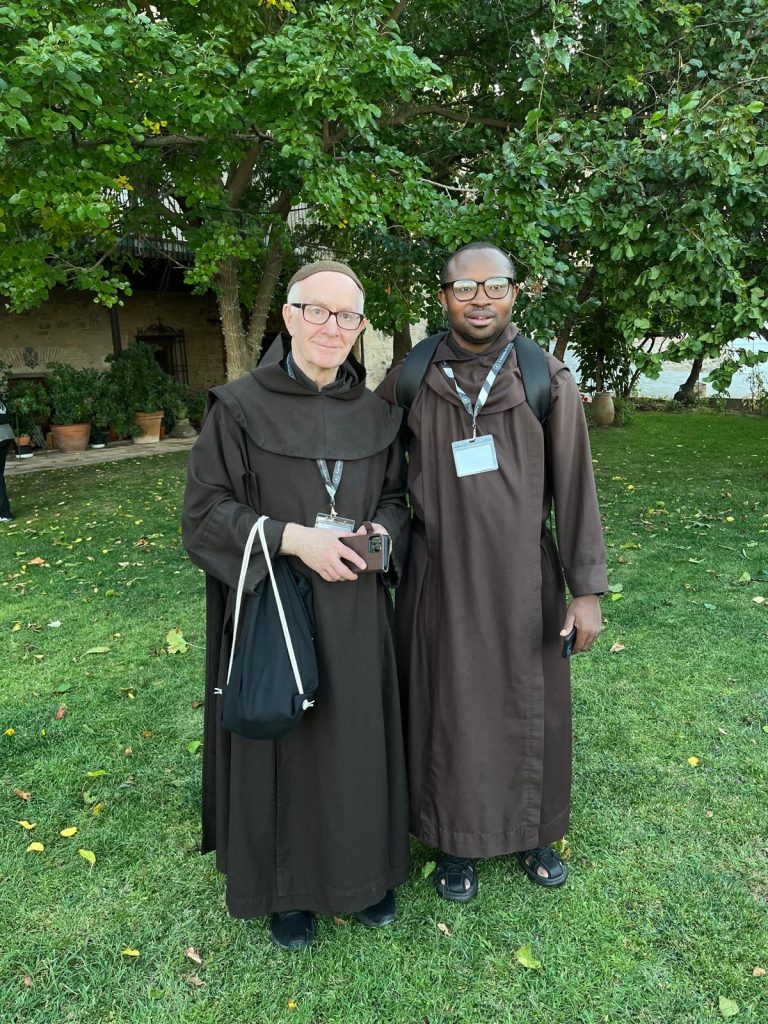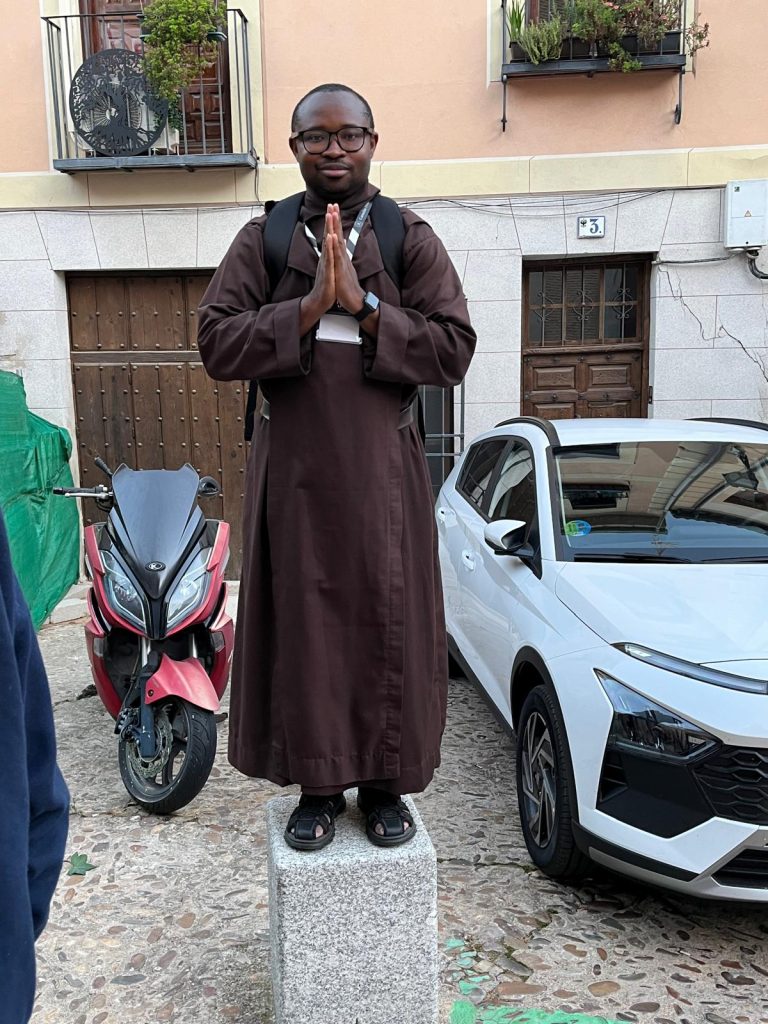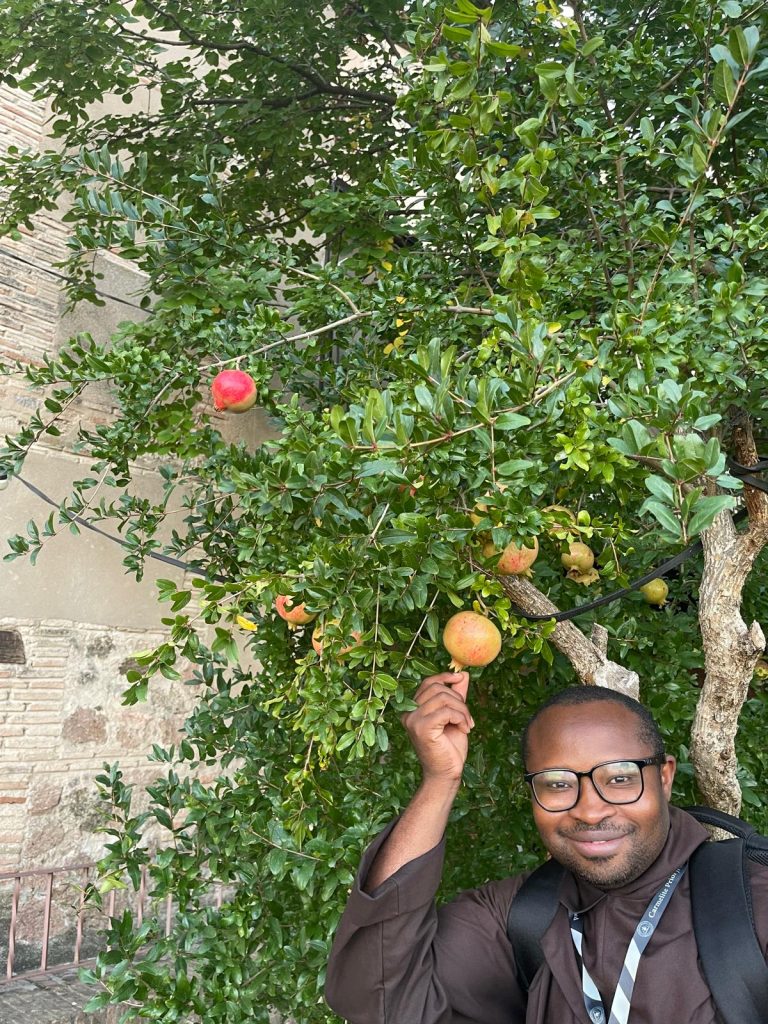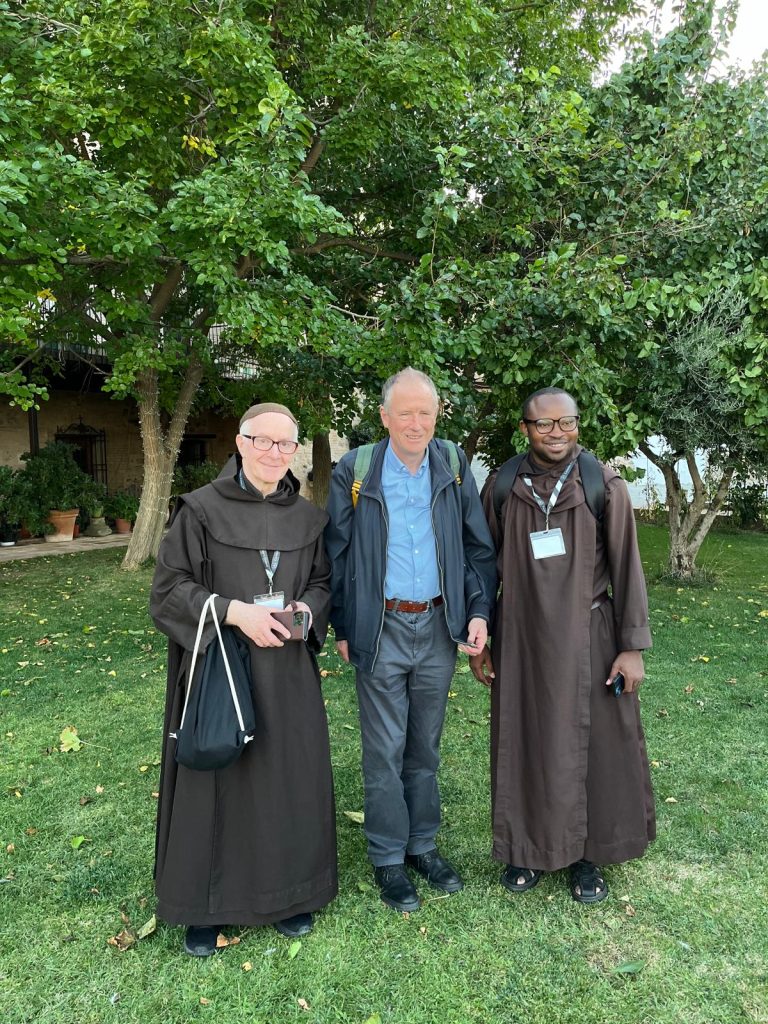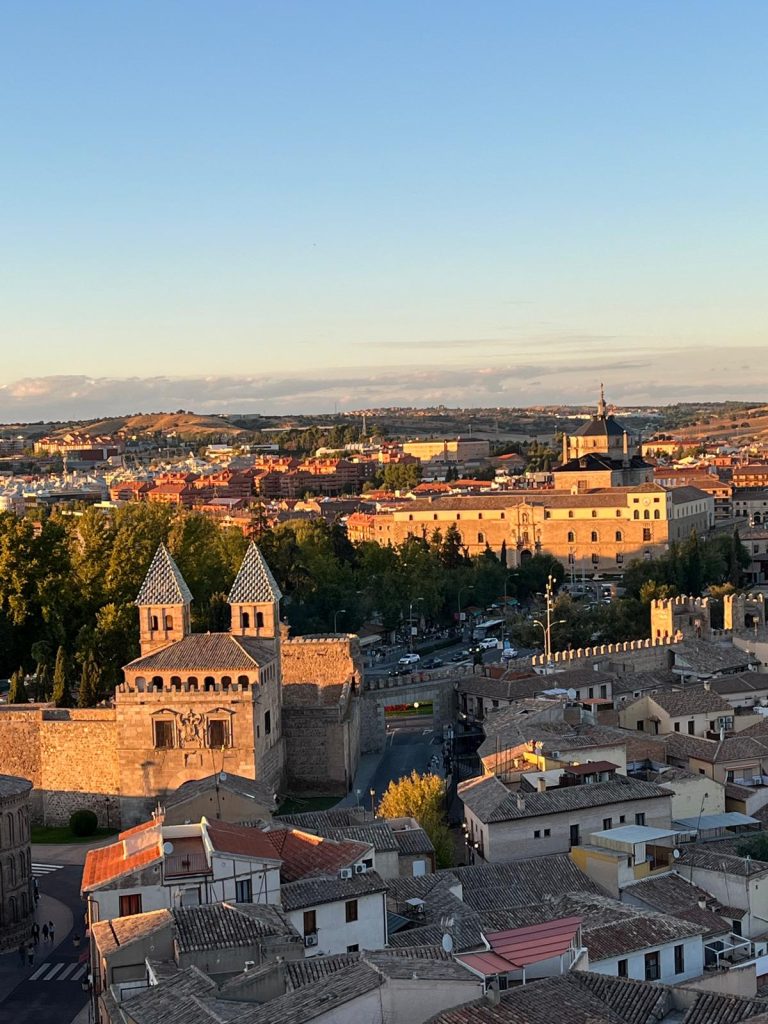Day 1: Pilgrimage Onset
Initial Meet Up and Fellowship
Participants in the “God Alone Is Enough” fall 2024 retreat, congregated at Madrid-Barajas airport to begin a transformational journey with St. Teresa of Avila, the Holy Mother of the Carmelite Order.
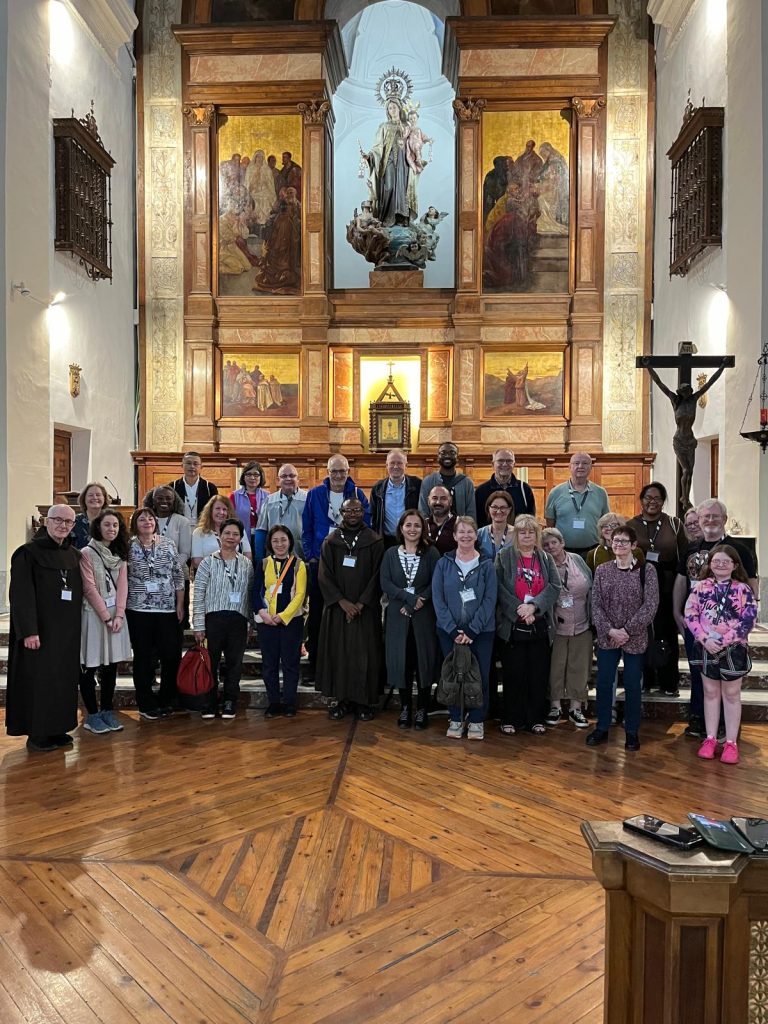
Approximately half of the participants are recent graduates of a spiritual direction course — founded by the Centre of Applied Carmelite Spirituality (CACS) — from the United States and the United Kingdom. The other participants consist of family members and friends of the graduates, in addition to individuals sincerely curious about Carmelite spirituality. The excitement for what lies ahead was palpable and contagious; a childlike disposition replete with curiosity, innocence, and receptivity. It was evident that this retreat — anchored by St. Teresa of Avila’s profound spirituality — elicited a specific type of individual: humble, hopeful, and inspired.
Even amongst strangers, there was a natural camaraderie and exuberance that resembled a family dynamic. Indeed, the body of Christ was alive among us! There was an air of spiritual renewal and contemplative possibility. The pervasive sense of mutual fellowship, whereby the Holy Spirit flowed creatively throughout our conversations, was undeniably poignant. One quickly gathers that Providence alone orchestrated the collection of souls in such a purposeful manner for our edification.
Under the wise leadership of Fathers Matthew Blake, Kelvin Ekhoegbe, and Liam Finnerty, we were prayerfully encouraged to allow God to be God, so that He might reveal Himself afresh during our time together.
Travel to Toledo
We boarded a comfortable and modern coach to Toledo, where the collective exhaustion and fatigue of travel began to manifest themselves in the form of abrupt naps, vocal quietude, and absorptive stares through the window. Our drive from Madrid to Toledo offered mesmerising and panoramic views of the hills as the reality gradually set in that we were dwelling on hallowed ground. The imagination could not help but stir and romantically dream about the 16th
century landscape of St. Teresa of Avila — the roads she may have traversed, the places she may have visited, and her overall historical imprint on Spain itself. Especially for first-time visitors, and those devoted to St. Teresa, there was an unavoidable sense of surreality and enthused timidity.
Two imperative questions arose: “What shall we encounter? And will be ready for it?”
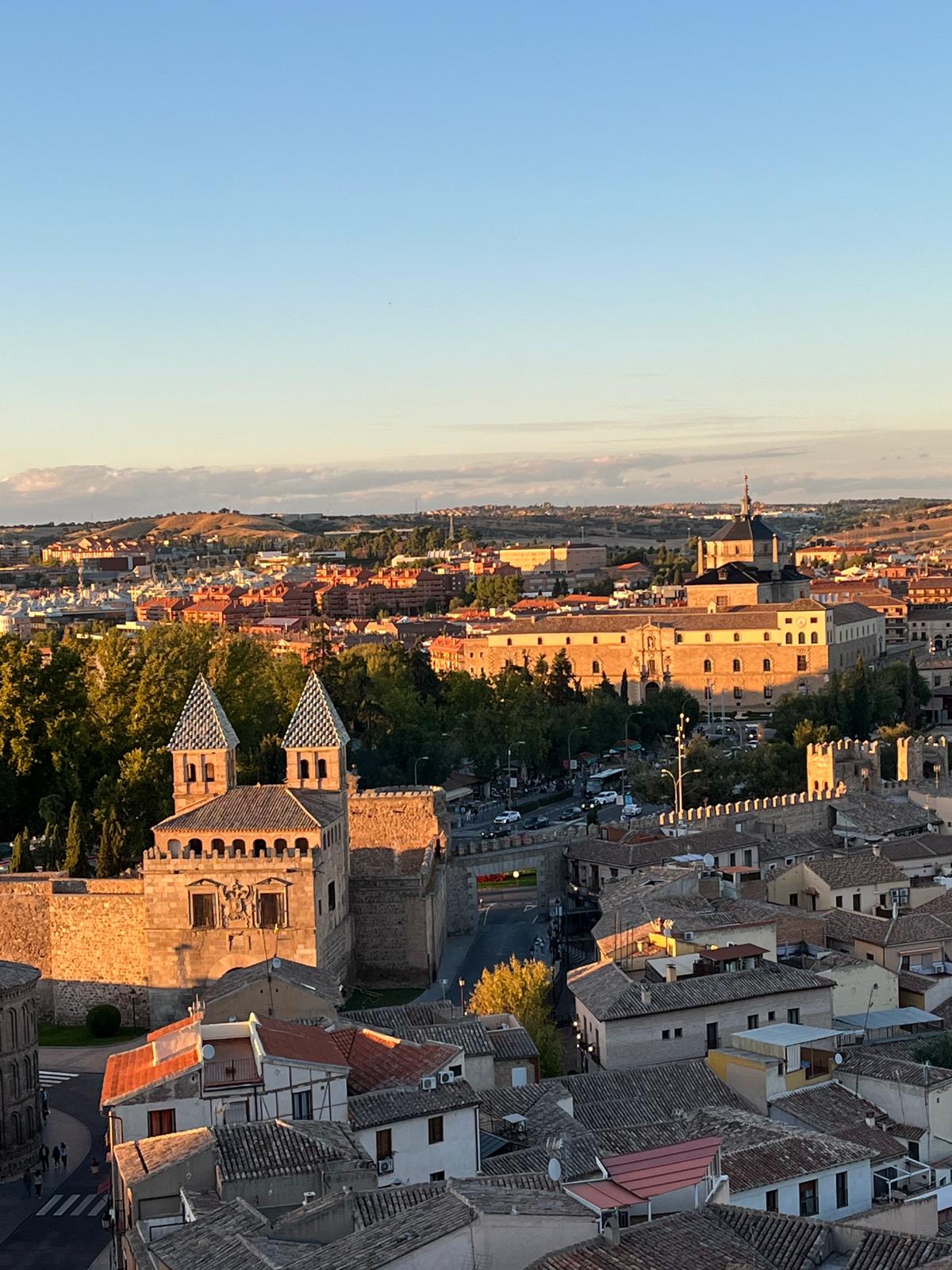
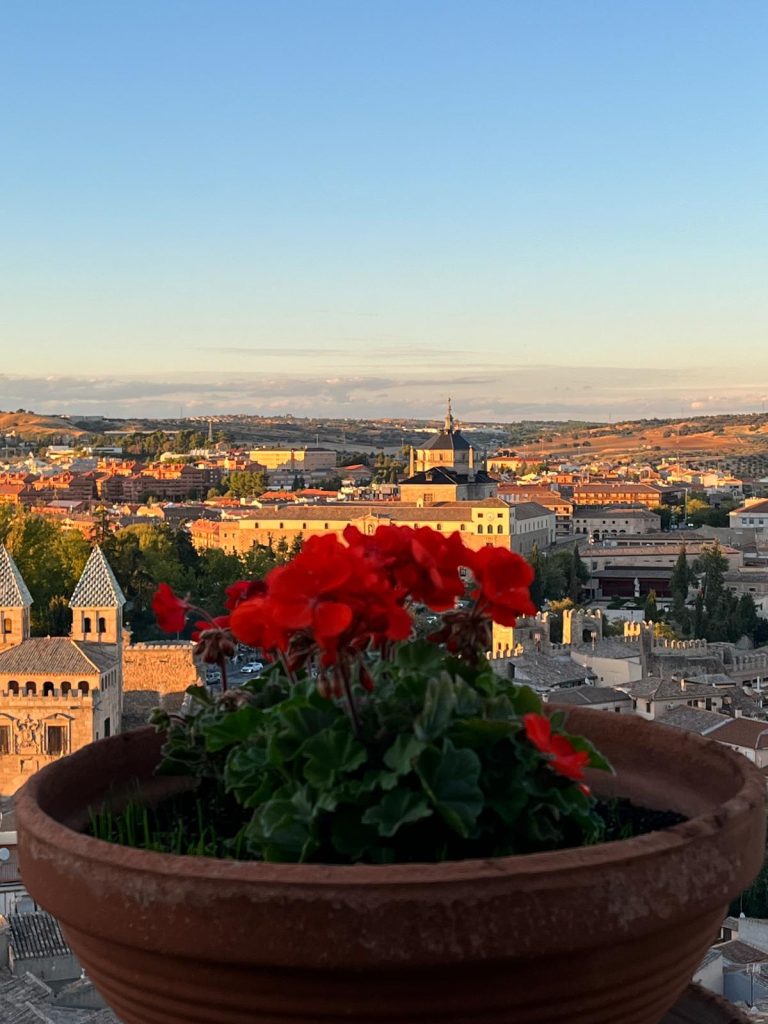
First Excursion
Upon arriving at our hotel accommodations, we were pleasantly surprised by the
modernity of the hotel and its close proximity to downtown. We were allotted nearly two hours of much needed rest, and began our first group excursion on foot through Toledo’s archaic, cobblestoned streets — marvelously preserved and imbued with sentiments of the sacred. The locals of the city were active, engaged, and accommodating to our tourism, made especially obvious by our dangling retreat badges, Carmelite embroidered back bags, and the classic efflux of copious photography.
Toledo can be strikingly hilly with tight alleyways, corners, and streets
that make travel on foot a true exercise. Still, we were positively captivated by the city’s quaint architecture and medieval allure.
As we ascended the crooked roadways, we were led by Father Blake to La Capilla de San Jose; the acclaimed site, where St. John of the Cross was granted refuge by Carmelite nuns following his escape from prison. This was a solemn moment as we had the clear recognition that one of the Catholic Church’s greatest saints passed through this small window of history and left an indelible trace of his earthly presence. The massive door of antiquity through which St. John of the Cross passed was still intact, which concretised our imaginative renderings of this moment. We paused for awhile and attempted to digest the significance of this tender memory.
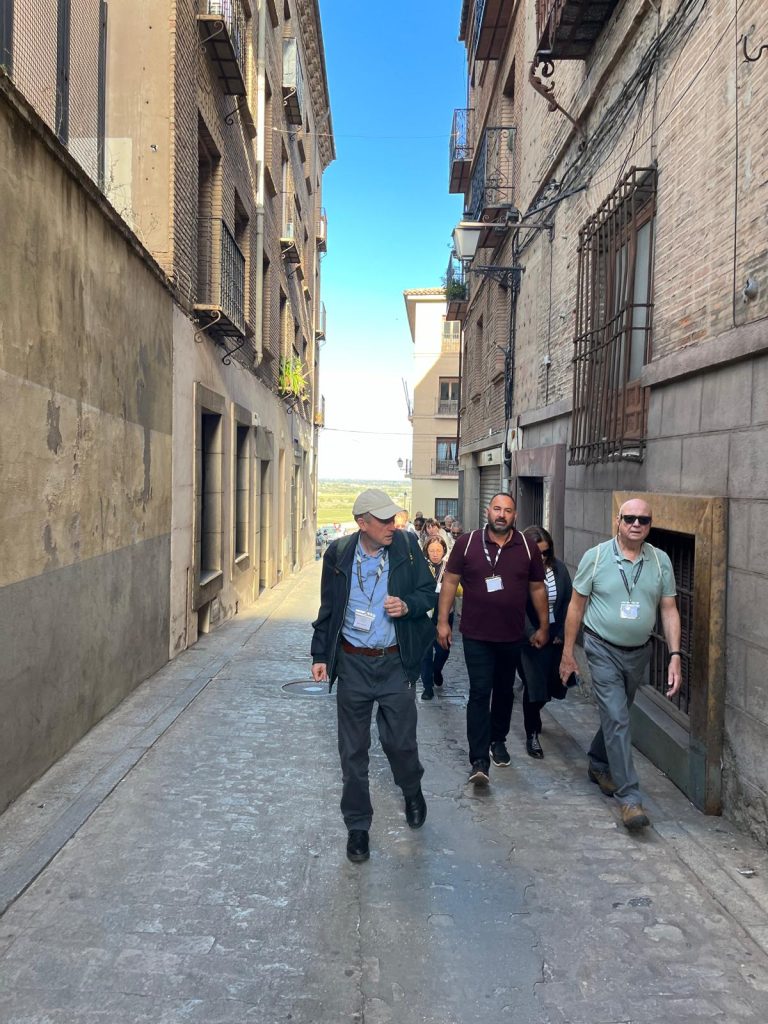
Mass, Relics, and Art
Once we surmounted the top of the hill, we entered Casa Espiritualidad Toledo, the historical center of the city, for afternoon mass. Originally a convent, the sacred structure now serves as a “House of Spirituality.” Fathers Liam, Kelvin, and Matthew presided over mass, which took place in the midst of two astounding relics. The relics, secured inside of two, individual golden boxes, are a tooth from St. Teresa and a finger from St. John of the Cross. Adjacent to the altar are relics from Carmelite Friars, who were savagely murdered during the Spanish Civil War, just steps away from the building. The building itself is undergoing extensive repairs as the roof has sustained immense damage from a recent storm.
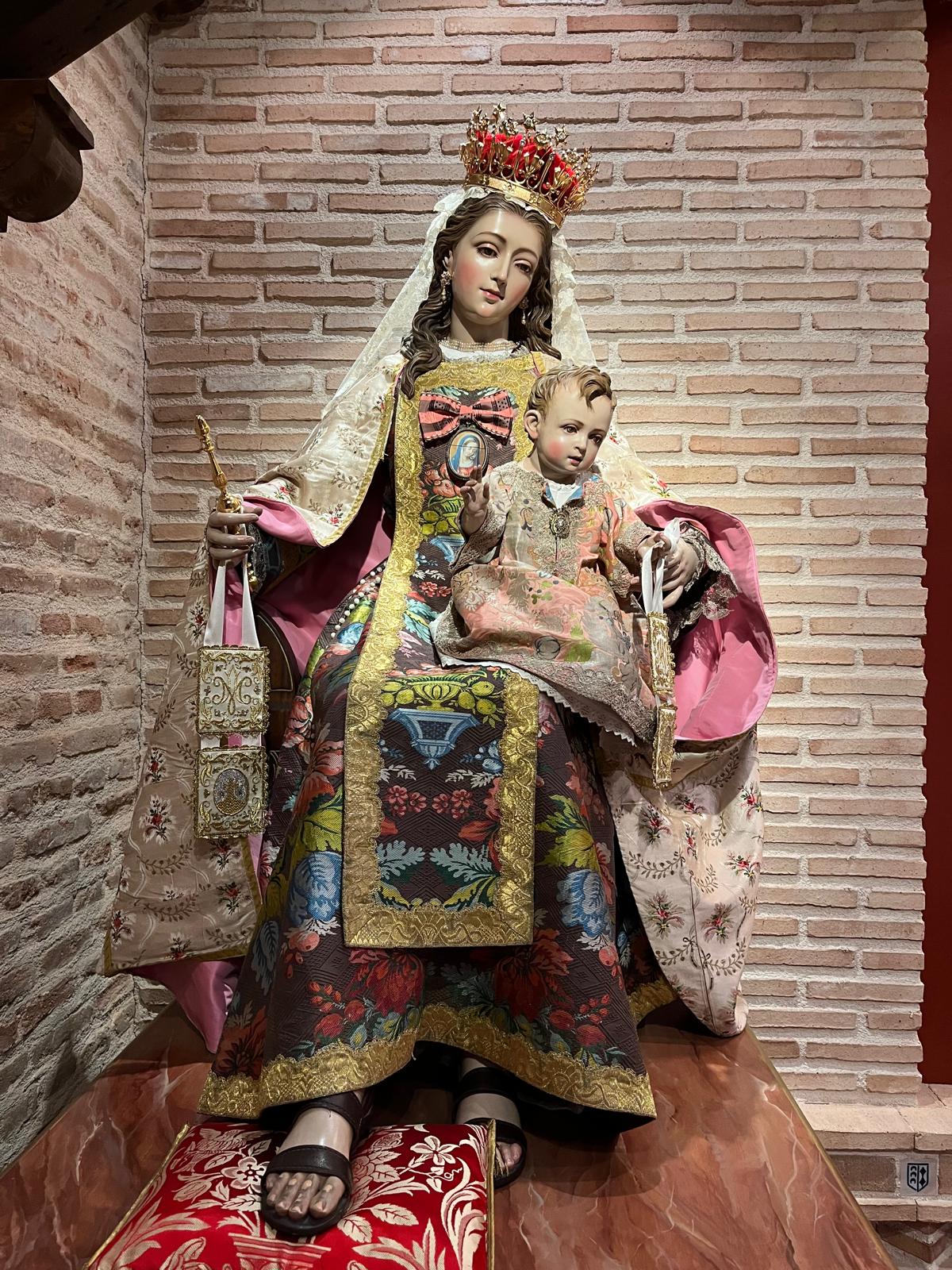
Fr. Kelvin’s homily spoke about the importance of approaching the Divine Person of Jesus. He whispers and knocks on the door of the human heart (Revelations 3:20), waiting to give Himself to us in superabundance. However, we have to incline our ear to His voice, that we may enter into the fullness of His divine life. Throughout the halls of the House of Spirituality, there were breathtaking statues and paintings of our Holy Carmelite Mother, St. Teresa, and our Holy Father, St. John of the Cross. We moved in relative silence because of the reverent and sublime aura of the art. A contemplative posture is indispensable in apprehending the glory of God that dwells within Casa Espiritualidad Toledo.
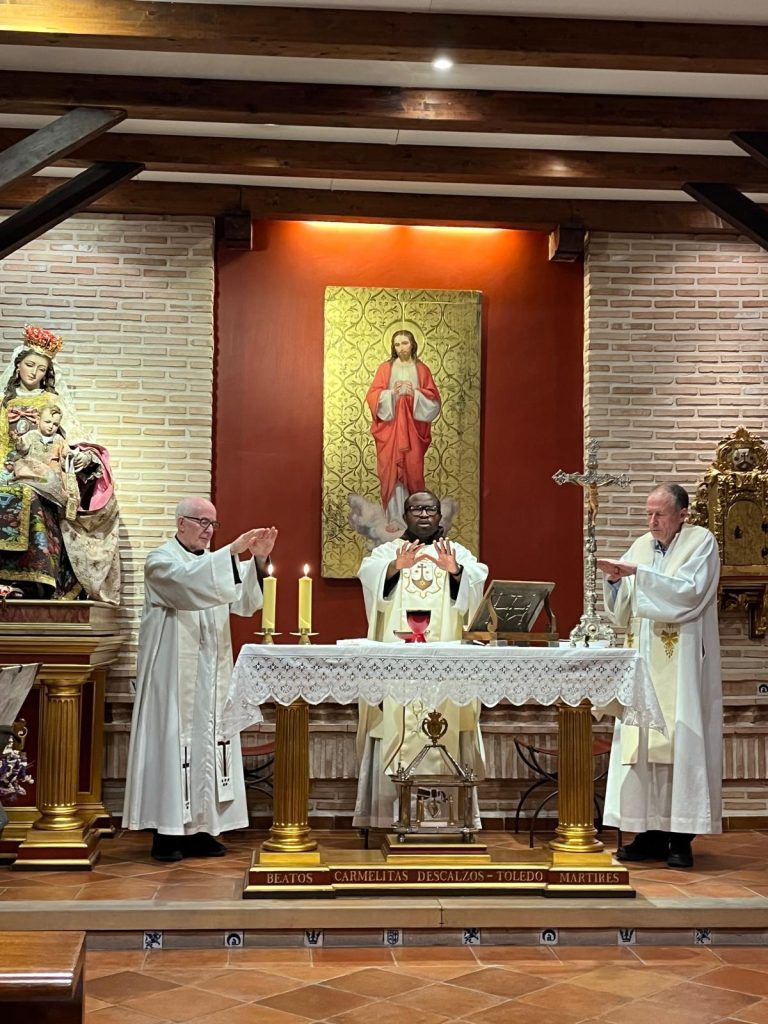
Garden and First Meal
We spent several minutes in the outdoor garden of the House of Spirituality that overlooks Toledo as if from a heavenly tower. Many of us were riveted by a luscious pomegranate tree that resembled the artistic depictions of the tree of the knowledge of good and evil. We could’ve spent the whole day there — transfixed by the mystery of the city’s beauty and sophistication. We descended to our hotel through the city streets, observing the sheer vitality of
Toledo at night. When we finally sat down for our first retreat meal, we were met with spectacular service, healthy food, and even better conversation with extraordinary people.
